Local Historic Districts
Madison has five local historic districts. Each has unique properties and stories to tell. The Madison Landmarks Commission reviews all exterior changes proposed in local historic districts. This preserves community character and allows buildings to evolve without losing history.
The Historic Preservation Ordinance lists the Historic District Standards by level of impact:
- Maintenance (these standards help owners care for their building. This work rarely needs approval from the Commission.)
- Repair
- Alteration
- Addition
- New construction
These standards provide a guide for how repairs and changes in our districts can occur.
Mansion Hill Historic District
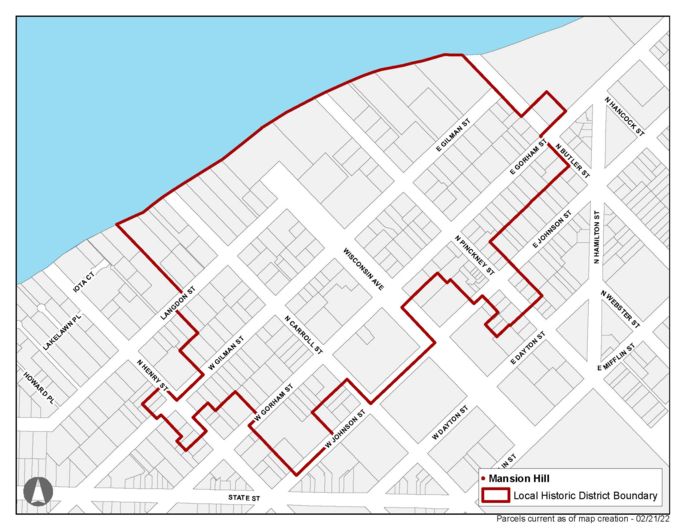 Mansion Hill is a residential neighborhood north of the Capitol Square. In the 19th century it was one of Madison's most prestigious neighborhoods. The area was home to many influential residents. Today, it contains the largest number of intact Victorian houses in Madison. Developers in the 1950s-70s demolished houses to build apartments or commercial buildings. Concerned about more demolition, residents asked the City to create a historic district. The Common Council named Mansion Hill our first historic district in 1976.
Mansion Hill is a residential neighborhood north of the Capitol Square. In the 19th century it was one of Madison's most prestigious neighborhoods. The area was home to many influential residents. Today, it contains the largest number of intact Victorian houses in Madison. Developers in the 1950s-70s demolished houses to build apartments or commercial buildings. Concerned about more demolition, residents asked the City to create a historic district. The Common Council named Mansion Hill our first historic district in 1976.
Third Lake Ridge Historic District
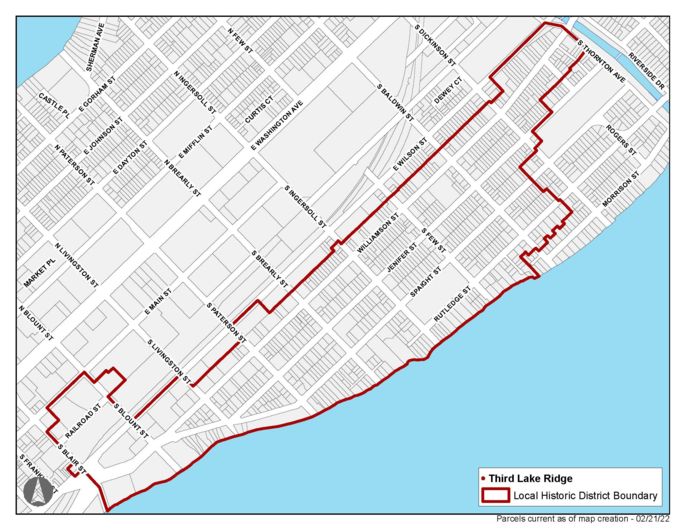 Third Lake Ridge includes the oldest section of the Marquette neighborhood. It extends from Blair Street to the Yahara River and from Williamson Street to Lake Monona. The area has a variety of buildings, from churches and warehouses, to cottages and mansions. It was a place where a diversity of people lived, worked and shopped. The Marquette Neighborhood Association asked to make the area a historic district in their revitalization plan. This included beautification, economic development, zoning studies and traffic redirection. Common Council named Third Lake Ridge as our second historic district in 1979.
Third Lake Ridge includes the oldest section of the Marquette neighborhood. It extends from Blair Street to the Yahara River and from Williamson Street to Lake Monona. The area has a variety of buildings, from churches and warehouses, to cottages and mansions. It was a place where a diversity of people lived, worked and shopped. The Marquette Neighborhood Association asked to make the area a historic district in their revitalization plan. This included beautification, economic development, zoning studies and traffic redirection. Common Council named Third Lake Ridge as our second historic district in 1979.
University Heights Historic District
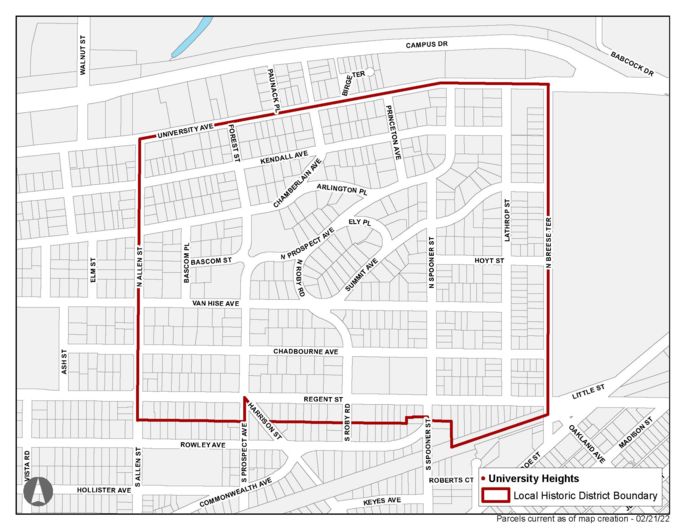 University Heights was laid out in 1893 and is one of Madison's first suburbs. Its curved streets and beautiful vistas attracted families of professors and business people. The area includes some of Madison's most significant Queen Anne, prairie style and period revival houses. Madison's finest architects, as well as nationally-known Keck and Keck, George W. Maher, Louis Sullivan and Frank Lloyd Wright, designed residences in the Heights. Common Council named University Heights our third historic district in 1985.
University Heights was laid out in 1893 and is one of Madison's first suburbs. Its curved streets and beautiful vistas attracted families of professors and business people. The area includes some of Madison's most significant Queen Anne, prairie style and period revival houses. Madison's finest architects, as well as nationally-known Keck and Keck, George W. Maher, Louis Sullivan and Frank Lloyd Wright, designed residences in the Heights. Common Council named University Heights our third historic district in 1985.
Marquette Bungalows Historic District
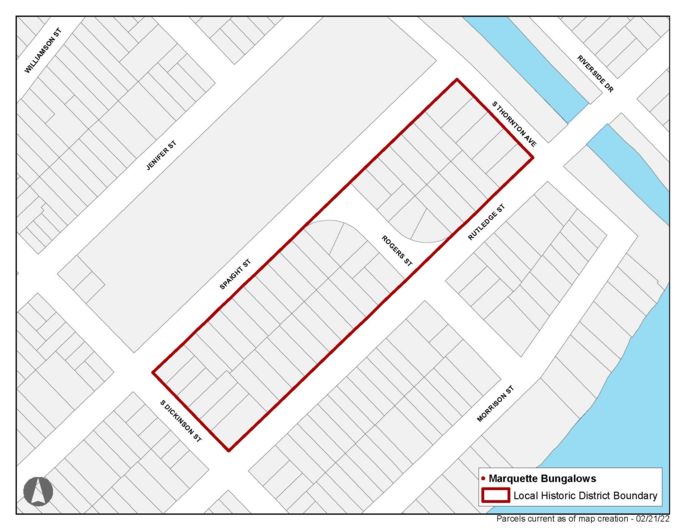 Marquette Bungalows is a grouping of bungalow houses on two blocks. It is bound by Spaight Street, Rutledge Street, S. Dickinson Street, and S. Thornton Avenue. In 1924 the Karrels Realty and Building Development Company planned the blocks. They named it the Soelch's Subdivision. They built five homes on the lots the first year, and continued to build several each year until 1930. In all they constructed 47 houses. The bungalows are similar in size and shape, but each has unique details. Although the houses are not large, the quality of construction is high. Many of the houses had wood floors, built-in cabinets and leaded glass windows. Common Council named Marquette Bungalows our fourth historic district in 1993.
Marquette Bungalows is a grouping of bungalow houses on two blocks. It is bound by Spaight Street, Rutledge Street, S. Dickinson Street, and S. Thornton Avenue. In 1924 the Karrels Realty and Building Development Company planned the blocks. They named it the Soelch's Subdivision. They built five homes on the lots the first year, and continued to build several each year until 1930. In all they constructed 47 houses. The bungalows are similar in size and shape, but each has unique details. Although the houses are not large, the quality of construction is high. Many of the houses had wood floors, built-in cabinets and leaded glass windows. Common Council named Marquette Bungalows our fourth historic district in 1993.
First Settlement Historic District
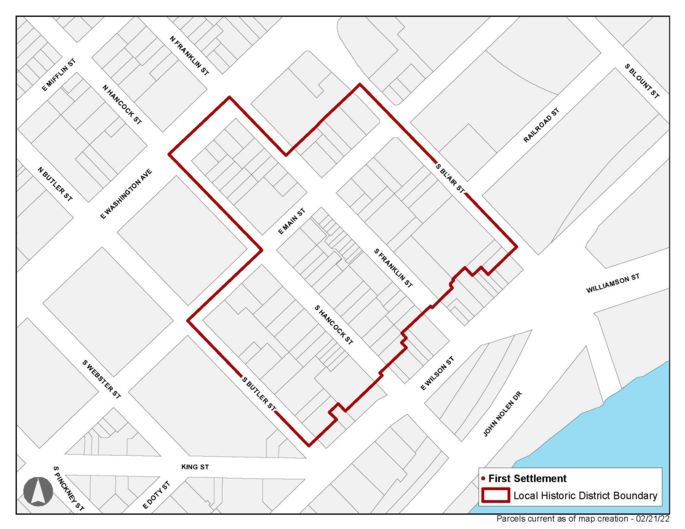 First Settlement is southeast of the Capitol Square. In 1837 Eben and Rosalie Peck built a boarding house on South Butler Street for the builders of the first state capitol. Their log cabin was the first occupied house in Madison. As the 19th century progressed, more modest houses and some finer brick houses were built. The neighborhood remained until after World War II when development came to the area. New state government buildings impinged on the desirability of the area. City plans of the 1960s and 1970s marked it for complete redevelopment. In the late 1970s, downtown residents began to move back to the area and restore the simple houses. In 2002 Common Council named First Settlement as our fifth historic district.
First Settlement is southeast of the Capitol Square. In 1837 Eben and Rosalie Peck built a boarding house on South Butler Street for the builders of the first state capitol. Their log cabin was the first occupied house in Madison. As the 19th century progressed, more modest houses and some finer brick houses were built. The neighborhood remained until after World War II when development came to the area. New state government buildings impinged on the desirability of the area. City plans of the 1960s and 1970s marked it for complete redevelopment. In the late 1970s, downtown residents began to move back to the area and restore the simple houses. In 2002 Common Council named First Settlement as our fifth historic district.
